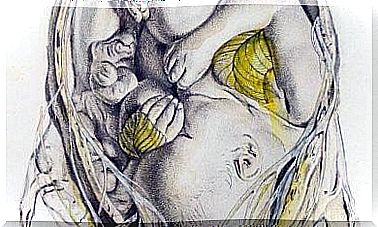Attention Deficit Hyperactivity Disorder: All Myths

A family unit can already be threatened by the problems of one of its members. For example, a child suffering from ADHD or Attention Deficit Hyperactivity Disorder is a problem that the whole family must take into account. However, this disorder is not always the problem in itself, but often the various myths surrounding it, with their social implications, are.
In general, ADHD occurs in childhood, but unfortunately most affected children do not get correct diagnoses. Similarly, it often happens that this pathology is associated with vices, lack of parental attention or elements of the child’s personality, such as vivacity.
In particular, some myths arising from the presence of ADHD in childhood can cause serious harm to the whole family. Especially if the problem is treated incorrectly and, as a result, is not adequately overcome.
False Beliefs About Attention Deficit Hyperactivity Disorder
Listening to false beliefs regarding this serious problem can have unwanted consequences in the family. This can lead to the formation of misconceptions and not related to the reality of what is happening.
In this sense, nothing is more important than consulting a doctor to ascertain the condition of the baby. Taking appropriate action can prevent the symptoms of this disorder from being more severe than they should and the conditions from being permanent.

Below we list the most common myths about Attention Deficit Hyperactivity Disorder.
1. ADHD does not exist
Many people are confident that Attention Deficit Hyperactivity Disorder is not a real disorder, but a commercial invention to ensure the sale of certain drug products.
Nevertheless, it is shown that those affected by this pathology date back to the nineteenth century, and even then it was linked to brain alterations. It is a pathology that can vary according to the symptoms, in accordance with the patient’s culture. When left untreated, it causes lack of professional development, propensity to use drugs, poverty and exclusion.
2. ADHD is cured over time
It is not a characteristic of age that ends by developing favorably, that is, it is not cured in adolescence or even in adulthood. While children who suffer from it are likely to see improvement in adolescence, there is a large percentage of individuals who fail to overcome it.
This false belief could originate from the fact that the symptoms of this pathology diminish over time until they become imperceptible. This happens because with maturity, you are able to control yourself and channel your impulses in other ways. Furthermore, the appropriate treatment allows better chances of a healthy coexistence.
3. He’s not ADHD, he’s a spoiled child
In general, the symptoms of the child suffering from ADHD are impossible to control, which is why they are often attributed to the anxiety characteristic of age. Often, therefore, this behavior is related to the result of a lack of education or little control on the part of the parents.
However, the impulses that are generated at the neurological level form a part of the disease and are involuntary. Although it is known that there may be a genetic component, ADHD is not the fault of the parent or even of an upbringing made of vices.
On the other hand, it is possible that the lack of clarity in establishing the rules, the absence of treatment or family trauma can aggravate the manifestation of symptoms.
4. Drug treatment of ADHD is dangerous
A general belief is that the treatment is worse than the disease. This is why many parents decide that drug treatment should be the last resort. In this sense, psychological therapy is used without the accompaniment of pharmacological therapy, for the unfounded fear that the treatment is dangerous.
This myth implies that psychological and family support is not sufficient, and that it can generate a certain frustration in front of the negative development of the disorder. Drugs such as dopamine or noradrenaline help neurotransmitters balance their levels; and they are safe, effective and carry little risk.

5. ADHD does not affect girls
Attention deficit hyperactivity disorder can affect both boys and girls, with distinct symptoms in each case. Male symptoms in particular are more severe and therefore easy to identify and require more attention.
In girls, on the other hand, the symptoms are similar to a depressive picture, which often does not affect school performance and, in most cases, is not diagnosed. While in males, negative behavior involves intervention whether the disease is diagnosed or not.









